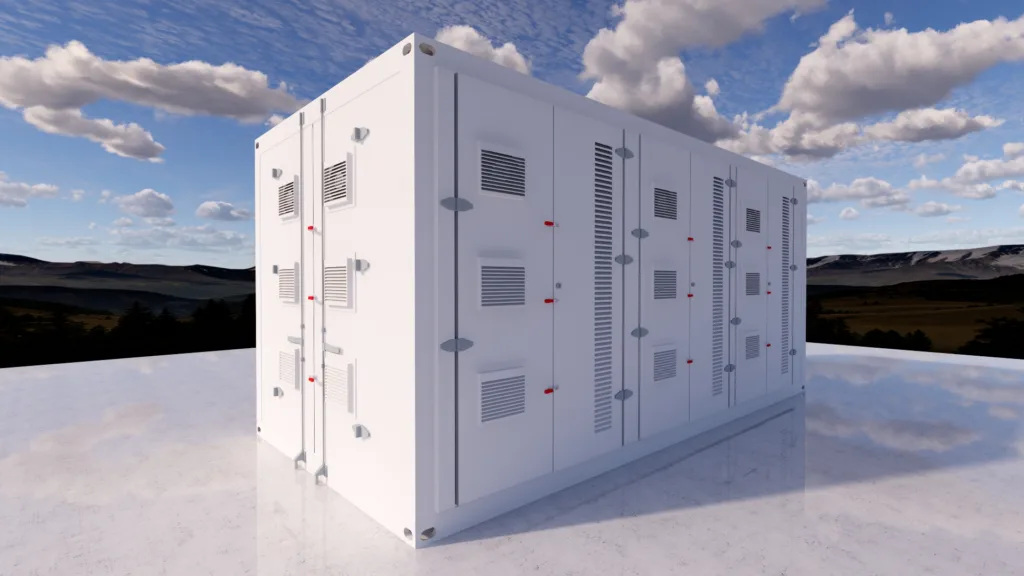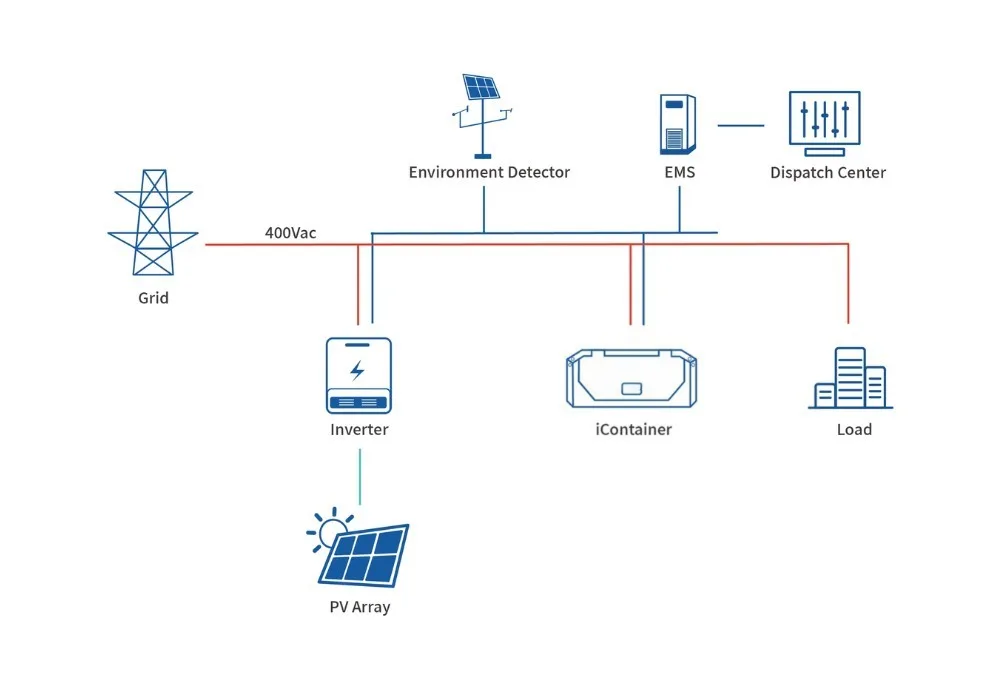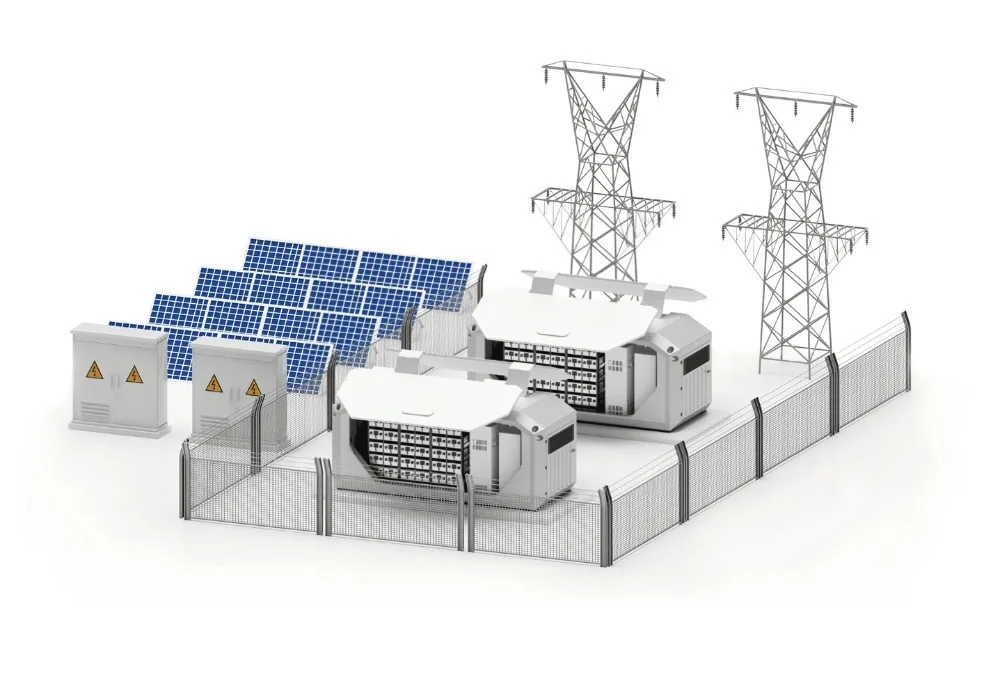Essentials of Container Battery Storage: Key Components, Uses, and Innovations
In an era where efficient and sustainable energy solutions are paramount, Container Battery Storage emerges as a game-changer. This comprehensive guide delves into the essentials of container battery storage, exploring its key components, innovative technologies, and diverse applications. Whether for residential, commercial, or industrial use, understanding the intricacies of container energy storage systems is crucial in navigating the evolving energy landscape. Join us in uncovering the transformative impact of these systems, paving the way towards a more resilient and sustainable future.

What is Container Battery Storage
In today’s rapidly evolving energy landscape, Container Battery Storage stands out as a pivotal innovation. But what exactly is it? Simply put, container battery storage refers to a mobile, modular energy storage system housed within a standard shipping container. This design not only maximizes portability and scalability but also offers a flexible solution to a wide range of energy needs.
At its core, a container energy storage system integrates high-capacity batteries, often lithium-ion, into a container. These batteries store electrical energy, making it readily available on demand. This system is not just about storage; it’s a holistic solution encompassing energy conversion, control systems, and often, advanced cooling mechanisms to ensure efficiency and longevity of the batteries.
The adaptability of a container storage system is one of its strongest suits. Whether it’s for grid support, renewable energy integration, backup power, or even mobile power solutions, these systems can be deployed swiftly and effectively. They are particularly invaluable in areas where traditional energy infrastructure is either unavailable or unreliable. Moreover, their modular nature means they can be scaled up or down to meet specific energy requirements, making them a versatile choice for both commercial and industrial applications.
Core Components of Container Battery Storage
Understanding the core components of container battery storage is crucial to appreciating its functionality and versatility. This chapter delves into these essential elements, shedding light on how they come together to create an efficient and robust container energy storage solution.
First and foremost are the batteries themselves. Typically, these are high-density, rechargeable lithium-ion batteries, chosen for their efficiency, longevity, and energy-to-weight ratio. They are the heart of the system, storing electrical energy for later use.
The Battery Management System (BMS) plays a pivotal role. It ensures optimal performance of the batteries by managing their charge and discharge cycles, monitoring their health, and providing essential safety features to prevent issues like overheating or overcharging.
Another key component is the Power Conversion System (PCS). This system converts the stored electrical energy into a usable form, matching the power quality and frequency requirements of the application or the electric grid.
Cooling and thermal management systems are also integral. They maintain an optimal operating temperature, thereby enhancing the performance and extending the lifespan of the batteries.
Lastly, the container itself. It’s not just a shell; it’s a carefully designed structure that protects the internal components, provides easy transportability, and allows for scalable deployment. The container’s design is tailored to ensure that all components function seamlessly together, regardless of the external environment.
How Container Battery Storage Works
Grasping how Container Battery Storage operates is key to understanding its impact and applications in the energy sector. This chapter offers an insightful look into the operational mechanics of this innovative system.
The process begins with energy input. This energy can come from various sources, such as the electrical grid, renewable sources like solar or wind, or even diesel generators. Once the energy is fed into the system, it’s time for the central feature of container battery storage: the charging phase. During this phase, the electrical energy is stored in the batteries, ready to be utilized when needed.
The Battery Management System (BMS) plays a crucial role at this stage. It meticulously controls the charging process, ensuring the batteries are charged efficiently and safely. This not only optimizes energy storage but also prolongs the life of the batteries.
When energy is needed, the system switches to the discharge phase. The stored energy in the batteries is then converted back into electrical power by the Power Conversion System (PCS). This power is now in a form that can be utilized by electrical grids or power various applications.
A critical aspect of the discharge process is ensuring the power output matches the demand in terms of voltage, frequency, and other electrical parameters. This is where the PCS demonstrates its value, adapting the output to suit the specific needs of the end-use, whether it’s feeding into a commercial power grid or powering remote industrial equipment.
The entire operation of a container energy storage system is underpinned by advanced control systems. These systems manage the intricate dance between charging and discharging, maintaining balance, and ensuring efficiency.
Types of Batteries Used in Container Systems
A pivotal aspect of Container Battery Storage systems is the type of batteries they employ. This chapter delves into the various types of batteries utilized in these systems, highlighting their unique features and suitability for different applications.
The most commonly used battery in container storage systems is the Lithium-ion (Li-ion) battery. Renowned for its high energy density, long life cycle, and relatively quick charging capability, Li-ion batteries are an ideal choice for applications requiring high efficiency and durability. They are particularly favored in grid storage and renewable energy integration.
Another popular choice is the Lead Acid battery. Known for their reliability and cost-effectiveness, lead acid batteries are often used in settings where high energy density is less critical. They are commonly found in backup power and emergency systems, where they provide a dependable energy reserve.
Flow batteries, such as the Vanadium Redox Flow battery, are emerging as a viable option for container storage systems. These batteries excel in long-duration energy storage, making them suitable for applications like load leveling and peak shaving. Their ability to maintain capacity over long periods and their scalability are their key advantages.
Additionally, Nickel-Cadmium (Ni-Cd) and Nickel-Metal Hydride (Ni-MH) batteries are also used in certain applications. These types offer robust performance in extreme temperatures and are known for their reliability, although they are less energy-dense compared to Li-ion batteries.

Anatomy of a Container Battery System
To fully appreciate the intricacies of Container Battery Storage, it’s essential to understand its anatomy or structure. This chapter breaks down the key components and their functions within a typical container battery system.
At the heart of the system are the batteries themselves, as discussed in the previous chapter. These are securely housed within the container, which provides physical protection and helps in maintaining optimal operating conditions.
The Battery Management System (BMS) is the brain of the operation. It constantly monitors and manages the battery’s performance, ensuring safety, efficiency, and longevity. The BMS tracks parameters like voltage, current, temperature, and state of charge, making real-time adjustments as necessary.
The Power Conversion System (PCS) is another critical component. It converts the direct current (DC) stored in the batteries into alternating current (AC) for use in various applications. This system is responsible for matching the energy output with the grid or load requirements.
A cooling system is integrated to regulate the temperature inside the container. This system is vital for preventing overheating and ensuring the batteries operate within their ideal temperature range, thus enhancing performance and lifespan.
Control and monitoring systems are also essential. They provide the user interface for system management, data collection, and remote monitoring. These systems enable operators to monitor the health and performance of the battery storage system and make informed decisions about its operation.
Lastly, the physical container is more than just a housing unit. It’s designed to facilitate easy transport, installation, and scalability. The container is typically equipped with necessary safety features like fire suppression systems and emergency shutdown mechanisms.
Innovations in Battery Technology
The field of battery technology is rapidly evolving, with innovations continually reshaping the landscape of Container Battery Storage. This chapter explores some of the latest advancements and how they are enhancing the efficiency, capacity, and sustainability of container storage systems.
A significant breakthrough has been in the development of solid-state batteries. These batteries promise higher energy densities, faster charging times, and increased safety compared to traditional lithium-ion batteries. The absence of liquid electrolytes in solid-state batteries reduces the risk of leakage and fire, making them a safer alternative for large-scale energy storage.
Another exciting development is the advancement in lithium-sulfur (Li-S) batteries. With a higher energy density than lithium-ion batteries, Li-S batteries could potentially offer longer life spans and reduced costs. Though still in the developmental stage, they present a promising future for energy storage solutions.
Innovations in battery management and intelligence are also noteworthy. Modern battery systems are increasingly incorporating smart technology, which enables more precise monitoring and management of battery performance. This not only enhances the efficiency and longevity of the batteries but also enables predictive maintenance, reducing downtime and operational costs.
The push towards sustainability has led to the development of environmentally friendly battery technologies. Newer battery types, such as those based on sodium-ion, are being explored for their lower environmental impact compared to traditional batteries. These technologies are critical in reducing the carbon footprint of energy storage systems.
Finally, the integration of renewable energy sources with container battery systems is a key innovation. By harnessing solar, wind, or hydroelectric power for battery charging, these systems can operate more sustainably, reducing reliance on fossil fuels and contributing to a greener energy grid.
Safety Features in Container Battery Storage
Safety is paramount in the design and operation of Container Battery Storage systems. This chapter highlights the essential safety features integrated into these systems to ensure they operate reliably and protect against potential hazards.
The Battery Management System (BMS) is at the forefront of ensuring safety. It continuously monitors the state of the batteries, including voltage, temperature, and current. The BMS can detect and prevent potential issues like overcharging, overheating, and deep discharging, which are critical for preventing battery failures and extending their lifespan.
Thermal management systems play a crucial role in maintaining the batteries within their optimal operating temperature range. This not only enhances performance and efficiency but also reduces the risk of thermal runaway—a condition where batteries can become excessively hot and potentially lead to fires or explosions.
Fire suppression systems are a standard inclusion in container battery systems. These systems are designed to quickly extinguish fires, minimizing damage and ensuring the safety of the surrounding environment.
Structural integrity of the container is also a critical safety feature. Containers are built to be robust and durable, often incorporating materials and designs that are fire-resistant and capable of withstanding harsh environmental conditions.
Electrical safety components, such as circuit breakers and isolation switches, are integral to the system. These components ensure that the system can be safely disconnected from the power source or grid in case of an emergency, preventing electric shocks and other electrical hazards.
Lastly, remote monitoring and diagnostics allow for continuous oversight of the system’s performance. This enables early detection of potential issues and facilitates timely maintenance, further enhancing the overall safety of the system.

Applications and Use Cases of Container Battery Storage
Residential vs. Commercial Use
Container Battery Storage systems find diverse applications in both residential and commercial settings, each with unique requirements and benefits. In residential areas, these systems provide energy independence, backup power, and enhance the effectiveness of home solar installations. They offer homeowners a way to store excess solar energy for use during peak hours or power outages, ensuring a continuous energy supply.
In contrast, commercial applications of container battery storage are often on a larger scale. They support businesses and industrial facilities in managing energy costs, improving grid stability, and reducing carbon footprints. These systems can be crucial in peak shaving, where energy stored during low-demand periods is used during peak demand times, thus reducing energy costs and strain on the grid.
Emergency Power and Grid Support
One of the most critical applications of container battery storage is in providing emergency power during outages. These systems can quickly supply power, ensuring continuity in critical operations like hospitals, data centers, and emergency services. They are also instrumental in grid support, offering services like frequency regulation, voltage control, and load balancing, thereby enhancing grid resilience and reliability.
Renewable Energy Integration
A significant role of container battery storage is in the integration of renewable energy sources. They enable the effective use of solar and wind power, which are intermittent by nature. By storing excess energy generated during peak production times, these systems ensure a steady and reliable energy supply, even when the sun isn’t shining or the wind isn’t blowing. This not only maximizes the use of renewable resources but also aids in the transition towards a more sustainable energy grid.
Environmental Requirements for Container Battery Storage
The efficacy and longevity of Container Battery Storage systems are heavily influenced by their operating environment. This chapter focuses on the environmental requirements crucial for maintaining the optimal performance and safety of these systems.
Temperature Control is a primary consideration. Batteries, particularly lithium-ion types, have specific temperature ranges within which they operate most efficiently. Extreme cold can reduce their capacity and slow down chemical reactions, while excessive heat can lead to overheating and potential thermal runaway. Hence, maintaining an ambient temperature, typically between 15°C to 25°C, is vital for optimal battery performance and lifespan.
Humidity Control is also crucial. High humidity levels can lead to condensation inside the container, potentially causing corrosion or electrical shorts. Conversely, too low humidity might increase the risk of static electricity buildup. Maintaining a balanced humidity level within the container is therefore essential for the safety and efficiency of the system.
Ventilation plays a significant role in maintaining the proper environmental conditions inside a container battery storage. Adequate ventilation ensures the dissipation of heat generated by the batteries and the electronics, thus aiding in temperature regulation and preventing the buildup of any hazardous gases.
Protection from the Elements is imperative, particularly for outdoor installations. The container must be designed to withstand environmental factors such as rain, snow, dust, and UV radiation, which can otherwise impact the system’s integrity and functionality.
Geographical Considerations like altitude and seismic activity in the area of installation are important factors. High altitudes can affect the cooling systems’ efficiency, while areas prone to earthquakes or heavy winds necessitate additional structural reinforcements to ensure system stability and safety.
